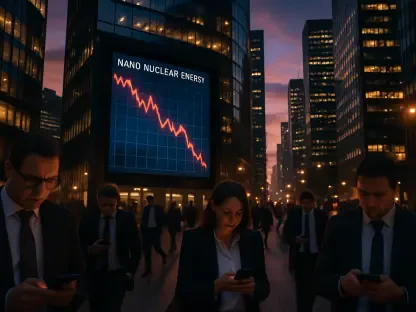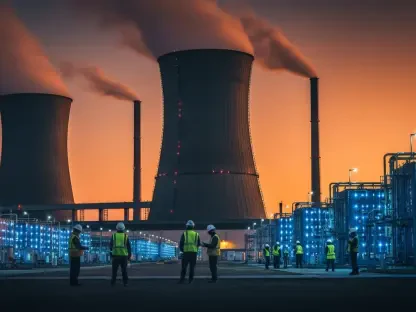Today, we’re thrilled to sit down with Christopher Hailstone, a renowned expert in energy management, renewable energy, and electricity delivery. With his deep knowledge of grid reliability and security, Christopher offers invaluable perspectives on the evolving landscape of climate policy and sustainable energy solutions. In this interview, we’ll explore the ambitious push for a global carbon market alliance at COP30, the effectiveness of carbon pricing as a tool to reduce emissions, and the broader implications for funding green initiatives. We’ll also touch on the challenges and criticisms surrounding these strategies, diving into how they fit into the global fight against climate change.
Can you walk us through the main objective of the EU and Brazil’s appeal at COP30 regarding carbon pricing?
Absolutely. The core goal of the EU and Brazil’s appeal at COP30 is to establish carbon pricing as a practical and effective way to cut CO2 emissions while funding the transition to a greener economy. They’re pushing for a global coalition of countries to adopt systems that put a price on carbon emissions, using the revenue to invest in clean technologies and support national climate plans. It’s about creating a unified front to tackle emissions head-on, building on frameworks like the Paris Agreement, and encouraging nations to set up their own carbon markets inspired by models like the EU’s emissions trading scheme.
How does the EU’s emissions trading scheme, or ETS, actually work in making companies accountable for their emissions?
The ETS, which has been in place since 2005, operates on a cap-and-trade system. Essentially, the EU sets a limit on the total amount of greenhouse gases that can be emitted by certain industries, like power and manufacturing. Companies within those sectors are allocated or must purchase emission allowances, which they can trade with one another. If they emit more than their allowance, they have to buy extra credits, and if they emit less, they can sell their surplus. This creates a financial incentive to reduce emissions, as polluting becomes costly. It’s a market-driven approach to push companies toward cleaner operations.
The EU claims the ETS has cut greenhouse gas emissions by 50% since 2005. Do you think this proves carbon pricing is an effective strategy?
I do think it’s a strong indicator of success, though it’s not the whole story. A 50% reduction in emissions since 2005 is significant, especially when you consider the revenue—over €250 billion—that’s been generated and can be reinvested into green projects. It shows that putting a price on carbon can drive behavioral change in industries. However, we must remember that this reduction is also tied to other policies, technological advancements, and economic shifts. Carbon pricing works best as part of a broader strategy, not as a standalone solution, but the EU’s results are certainly a compelling case for its potential.
European Commission President Ursula von der Leyen has been vocal about the value of carbon markets. What stands out to you about her perspective on this issue?
Von der Leyen has framed carbon pricing as not just an environmental tool, but also a win for the economy and society. She’s emphasized that it’s a central mechanism for cutting emissions while creating a solid business case—think job creation and innovation in green tech. Her view is that pricing carbon sends a clear signal to markets and industries to shift toward sustainability. Her strong backing also mirrors the EU’s broader ambition at COP30 to lead by example, showing that carbon markets can align economic growth with climate action, which is a powerful message to other nations.
There’s talk that carbon markets could unlock funding for projects like reforestation or renewable energy. How would that process actually play out?
The idea is that a credible carbon market provides a predictable revenue stream and a clear value for reducing or capturing emissions. Investors—whether private companies or financial institutions—need that certainty to commit funds to long-term projects. For instance, through carbon credits, a company could offset its emissions by funding a reforestation project or a solar farm in another region. The money from buying those credits directly supports the project. This mechanism can channel significant capital into initiatives that might otherwise struggle to get off the ground, especially in developing countries where funding gaps are huge.
Some critics argue that focusing on carbon pricing might distract from other critical ways to cut emissions. How do you respond to that concern?
It’s a valid concern. Carbon pricing is a powerful tool, but it’s not a silver bullet. There’s a risk that an overemphasis on market mechanisms could pull focus and resources away from equally vital strategies, like restoring forests or protecting oceans, which are natural carbon sinks. My take is that we need a balanced approach—carbon pricing should complement, not compete with, other efforts. For example, revenues from carbon markets can and should be used to fund ecosystem restoration alongside tech-based solutions. It’s about integration, ensuring all pieces of the climate puzzle get the attention they deserve.
The World Bank notes that about 55 countries already have carbon pricing systems, covering 28% of global emissions. What does this level of adoption tell us about the global momentum for this approach?
It’s a promising sign of growing acceptance. Having 55 countries on board, covering over a quarter of global emissions, shows that carbon pricing is gaining traction as a mainstream climate tool, especially since half of those emissions come from power and industrial sectors—big polluters. It suggests a shift in mindset, where more governments see the dual benefit of cutting emissions and raising revenue for green growth. However, the fact that 72% of emissions are still uncovered highlights how much work remains to scale this up, particularly in regions with high emissions but limited infrastructure for such systems.
Looking ahead, what is your forecast for the role of carbon markets in global climate action over the next decade?
I’m cautiously optimistic. Over the next decade, I expect carbon markets to become a cornerstone of climate policy in more countries, especially as the urgency to meet Paris Agreement targets intensifies. We’ll likely see more nations joining coalitions like the one proposed at COP30, and greater collaboration on harmonizing these systems internationally. The potential to mobilize private capital for green projects is enormous—think trillions of dollars if done right. But success hinges on addressing criticisms, ensuring transparency, and pairing markets with direct emission reduction policies. If we can strike that balance, carbon markets could be a game-changer in funding and driving the global transition to net zero.









